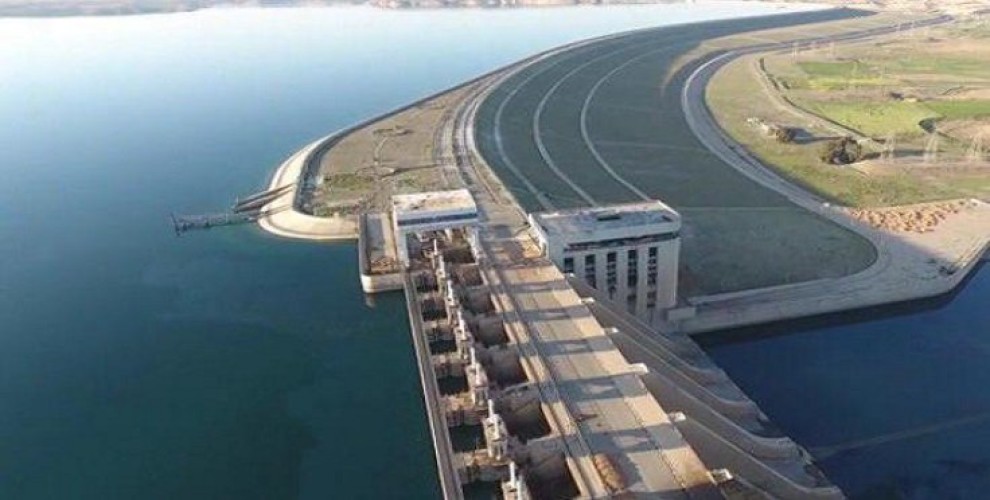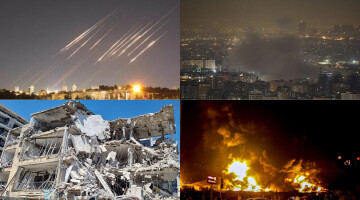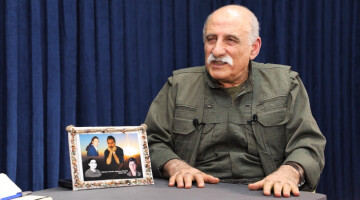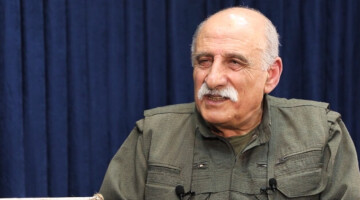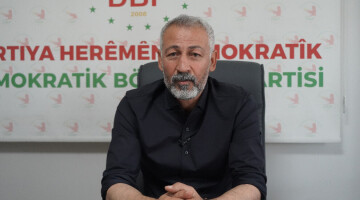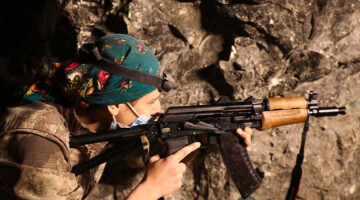Raphaël Lebrujah has interviewed French engineer Ludovic Leroy for ANF regarding the allegations that Tabqa Dam has been damaged as result of strikes and that ISIS could open the spill valves and flood the Euphrates valley.
Leroy stressed that the coalition airstrike is very important because thanks to the control room destruction and the crane damaging the spill valve cannot be opened easily by ISIS in order to food the valley, saying: “They could do that to claim it is due to the strike, or to destroy what they are leaving as they are used to do.”
Could you describe your position and background?
I am Ludovic Leroy, 38 years old, French Engineer’s degree in Mechanics and currently working in the Energy / Oil&Gas business as a Senior Lecturer in the field of turbomachines. I am committed to train theoretically and «on-the-job» technicians and engineers worldwide with a focus on Middle East area. My previous position was dealing with helicopters manufacturing either civilian or military applications.
What is your knowledge regarding Tabqa Dam?
Those last days I saw many articles and comments regarding the Tabqa Dam located upstream of Raqqa, specially after the alleged coalition airstrike and describing a dramatic situation of the dam threatening to collapse and flood the Euphrates valley. This would be obviously a human disaster.
Analyzing the video published trough AMAQ by ISIS and having some experience on some equivalent installations I am in position to give a my opinion on a purely technical point of view.
First of all it is important to describe Tabqa Dam as many of the articles focus on a particular and small part of the dam. Many information are available on Internet and the history of this project is quite interesting because it played important geopolitical tension between Syria and Iraq from the beginning.
Let’s focus on the technical field. Tabqa Dam know aka Euphrates Dam is located 40km upstream from Raqqa was originally built for two purposes: hydroelectric power and Euphrates sides irrigation. For several reasons, specially lack of maintenance, it had never fully reach its designed potential.
The dam is of the earth-filled type, measuring 4500m in length, 60m in height, 19m wide at the crest and 512m wide at the base.
The airstrike has been targeting only the Power generation plant. Most of the pictures published are concerning only the South spill valve and power generation plant area.
The power generation plant is based on 8 water turbines totalizing a power potential of 824MW. The plant never exceeded more than 150MW due to too low flow-rate from Turkey and maintenance issues.
Regarding the general location of the dam, it is important to notice that this dam is located:
- 15km upstream another dam closer to Raqqa (also dedicated to irrigation and power generation)
- 50km downstream another dam purely dedicated to power generation close to Manbij
This intermediate position mitigates the risk of Raqqa flooding has water flow-rate could be partly controlled from the upstream dam.
You have analyzed the video published by ISIS after the dam airstrike. What can you say about it?
The airstrike has been quite well analyzed by others. What we can see is that the strike have been focused on destroying the control room, certainly by using BLU109 bomb as seen in the video. We can definitely recognize the remaining of one of it at least on the following picture. The potential reason this bomb has not exploded will be explained later.
Old view of the control room is allowing to see that this location was the main target.
The round shaped window is highly recognizable. The aftermath scene shows a control room which has been exposed to high temperature.
It is crucial to notice that only the control room building has been targeted. Moreover it has been targeted by an BLU109 bomb which could be either inert or of the HAMMER type. The BLU109 HAMMER is a version which started to be develop in 2015 dedicated to penetrate bunkers without explosion, delivering kinetic fire ball inside to burn the bunker content. This development has been highly motivated to target chemical weapons Assad could have. In this case, if it was an inert one, filled with concrete, then the concrete fragment generated by the roof perforation projected on electrical cabinets could lead to short-circuit and fire. Or if it was a HAMMER, we can directly imagine the result of kinetic fire balls flying in the control room.
Another strike which has not been commented by others is the one targeting the spill valves tow crane which allow to manually operate the spill-valves.
This crane is movable on two rails topping the valves allowing to operate the valves in case of failure of the automatic system which use hydraulic jacks . This system is likely out of order due to to the destroyed control room. On the top of that on some picture we can see something that could be oil on the water surface that could come from the hydraulic system leaking.
The crane roof is perforated and some high temperature exposition sign can be seen on it. It maybe the result of a lighter weapon like a Hellfire missile aiming at damaging the crane only. There is no visible damage bellow it so it might not be the result of a heavy bomb like BLU109.
This strike is very important because thanks to the control room destruction and the crane damaging the spill valve cannot be opened easily by ISIS in order to food the valley. They could do that to claim it is due to the strike, or to destroy what they are leaving as they are used to do.
Regarding the turbine and generators, it is important to know that those equipment are located at the bottom of the dam, far from those hits.
No bomb has been used on the earth-fill area of the dam.
What kind of damages could lead to risks for civilian populations living downstream of the dam?
A strike on the spill valve area could damage part of the valves and lead to a quick increase of the downstream flow till reaching the bottom level of the valve. This is a huge quantity of water but this is also part of the normal operating conditions of a dam. For instance in France, every end of winter we can see such operations to control lake level in mountains area.
The BLU109 is able to smash through concrete shelters of less than 2 meters thickness. So a inert one could not create dramatic damage to the concrete spill valve construction.
The earth-fill dam area, not targeted, is a huge pill of rocks, clay and sand having a 512m width and 60m high. To damage it, a huge quantity of explosive material would be requested.
Moreover, Tabqa is only the second dam on the Euphrates river. If Tabqa dam is not able to control the lake level then the upstream one could help. The North Spill Valve are feeding the irrigation channel. Some videos has been publish showing the water flowing at this point. This could create some light flood for the lands around the channel maybe, but this is part of this irrigation principle.
It is important to notice that an underground pipeline starting from the dam is supplying tap water to Raqqa. This also another flow picking water from the lake.
Several organization and media like «Raqqa meurt en silence» said close to Syrian Opposition or the TV Channel close to Iran, Al-Mayadeen, have declared that the dam integrity was endangered. What can you say about it?
The images show no strike on the dam structure. Airstrikes seems to have targeted only the control system of the South side facilities, not the dam itself.
Are the airstrikes justified, is it a conservative approach or a risky one?
An airstrike on a dam is obviously risky. You have to deal with bomb accuracy, mistakes, guiding system failure. But it is likely inert or non explosive bomb that has been used on the control room building. So the risk to dramatically damage the dam is quite low.
The crane strike with what seems to be a light missile like Hellfire clearly shows for me that the goal was to get rid of any possibility ISIS opens the spill valves.
So to conclude I can say that this airstrike has been well prepared and executed.

